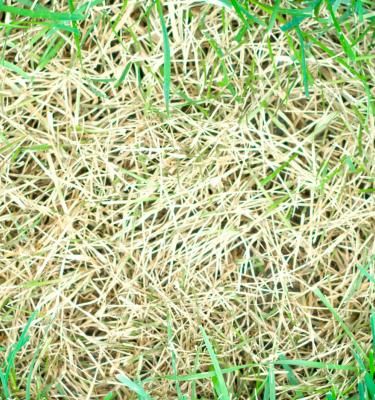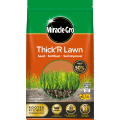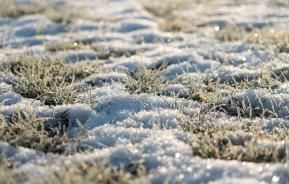Grasses in the lawn, just like many other garden plants, are subject to a number of disease problems. Luckily, they rarely do severe damage. The best way to control them is to ensure the grass is strong and healthy.
Common lawn diseases
The most common lawn diseases and fungi are listed below.
Red thread
The red thread is one of the commonest fungal diseases on lawns, especially on lawns that are deficient in nitrogen. It produces brown patches, especially during a wet summer and during the autumn.
The red thread is caused by the fungus Laetisaria fuciformis. It rarely completely kills the grass and the patches recover with proper lawn preparation and treatment. Affected grass produces a reddish tinge, later becoming light brown or even bleached in appearance and the leaves may bind together. Patches vary in size, usually from 7.5cm to 25cm (3in to 10in) in diameter, but can be much larger.
Fusarium patch or snow mould
Fusarium patch, more commonly called snow mould, is a common cause of brown patches on lawns. It is particularly prevalent in autumn or during mild spells in winter, but attacks can occur at any time of the year.
Snow mould is caused by the fungus Monographella nivalis and at first produces small patches of yellowy, dying grass that usually turn brown later. The patches increase in size and may reach 30cm (12in) in diameter, sometimes merging so that large areas can be affected. During wet conditions a white or pinky, cotton-like fungal growth may be noticed, especially at the margins of the patch.
Fairy rings
Fairy rings are caused by a number of different fungi that produce rings of dead grass and usually toadstools in the lawn in late summer and autumn.
Symptoms of attack are variable, depending on the fungus responsible, but the following are characteristic of fairy rings: an irregular ring of dead grass; adjacent to the dead grass, on both the outside and the inside of the ring, the grass may be greener than the rest of the lawn.
It is always worth kicking over the toadstools before they mature and release spores. But if you’re patient, as the rings grow in size each year, eventually they will outgrow the lawn!
Take-all patch
Take-all patch is one of the most damaging lawn diseases, but thankfully it is not that common. It first appears in mid-summer.
Take-all patch is caused by the fungus Gaeumannomyces graminis, formerly known as Ophiobolus graminis - hence its former common name of ophiobolus patch. It first appears as small circular patches, expanding to around 50cm to 100cm (20in to 40in) in diameter. It tends to affect bent and other fine-leaved grasses producing dying areas of straw-coloured grass. Take-all patch eventually disappears after December but can keep coming back for several years.
How to treat and control lawn diseases
It is fairly easy to keep lawn diseases and fungi under control or prevent them from occurring in the first place by practising good lawn care.
- Keep the lawn at a good length all year round. Never scalp the lawn as this weakens the grass.
- Ensure the lawn is well fed all year round by using a lawn feed in spring and summer. But avoid high doses of nitrogen fertiliser in late summer or autumn - always use an autumn lawn feed instead.
- Poor drainage and compacted areas will encourage diseases and reduce grass health, so improve drainage by forking the lawn or use a solid-tine or, better still, a hollow-tine aerator in autumn.
- Thatch can encourage lawn diseases, so scarify with a spring-tine rake or electric scarifier in autumn and/or spring to remove thatch, moss and any other dead material and help aerate the soil.
- Dry lawns in summer can be more prone to diseases as it weakens the grass, so wherever possible water thoroughly during extended dry periods in summer.
- Disposing of grass cuttings will reduce the amount of fungus present to re-infect the lawn.








